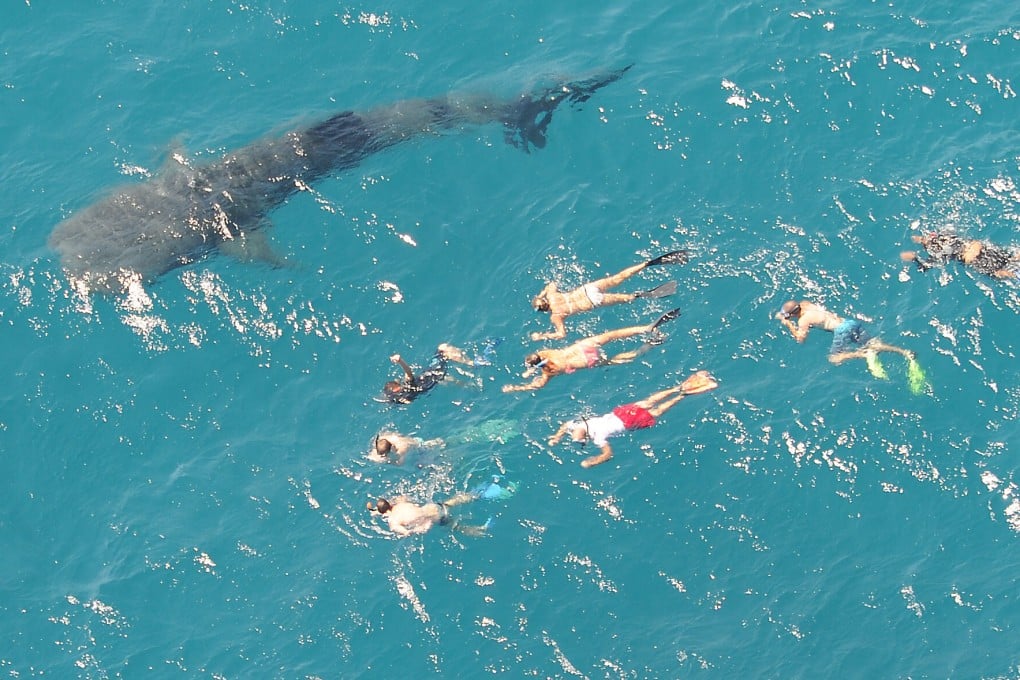Whale sharks tracked using eDNA, and techniques from a forensic crime lab, to solve mysteries of the giant fish in Western Australia where they gather
- Up to 500 whale sharks gather at Ningaloo Reef every year, and scientists at a newly built research facility use the opportunity to find out more about them
- They will study environmental DNA to assess the diversity of the whale shark population, and in due course the prevalence of other marine species

Bobbing on the surface of the vast ocean, I’ve never felt smaller. I am waiting for a shark that’s the size of a minibus. My heart pounds as the monster materialises, advancing towards me, mouth agape.
It’s an endangered whale shark, about six metres long, and as I fin along beside the filter-feeder, I stifle a delighted squeal through my snorkel.
Like many tourists, it’s this bucket-list experience that brought me to World Heritage-listed Ningaloo Reef, in Western Australia, some 1,200km (750 miles) north of Perth. Up to 500 whale sharks are estimated to migrate to Ningaloo Reef between March and July annually, making this the largest aggregation in the world.
The opportunity to swim with whale sharks has put the tiny town of Exmouth on the visitor map. In 2018-19, tourism here was estimated to be worth A$174 million (US$127 million) per year, supporting about 950 jobs.

Whale sharks are a puzzle for scientists. But that looks likely to change, along with the solving of many other mysteries of the ocean. The Minderoo Foundation Exmouth Research Laboratory (Merl) was officially opened in September, bringing world-class research capabilities to Ningaloo Reef.
The laboratory is funded by the Minderoo Foundation, the philanthropic organisation of Andrew Forrest, the founder of iron-ore miner Fortescue Metals Group who is frequently cited as Australia’s richest man.
